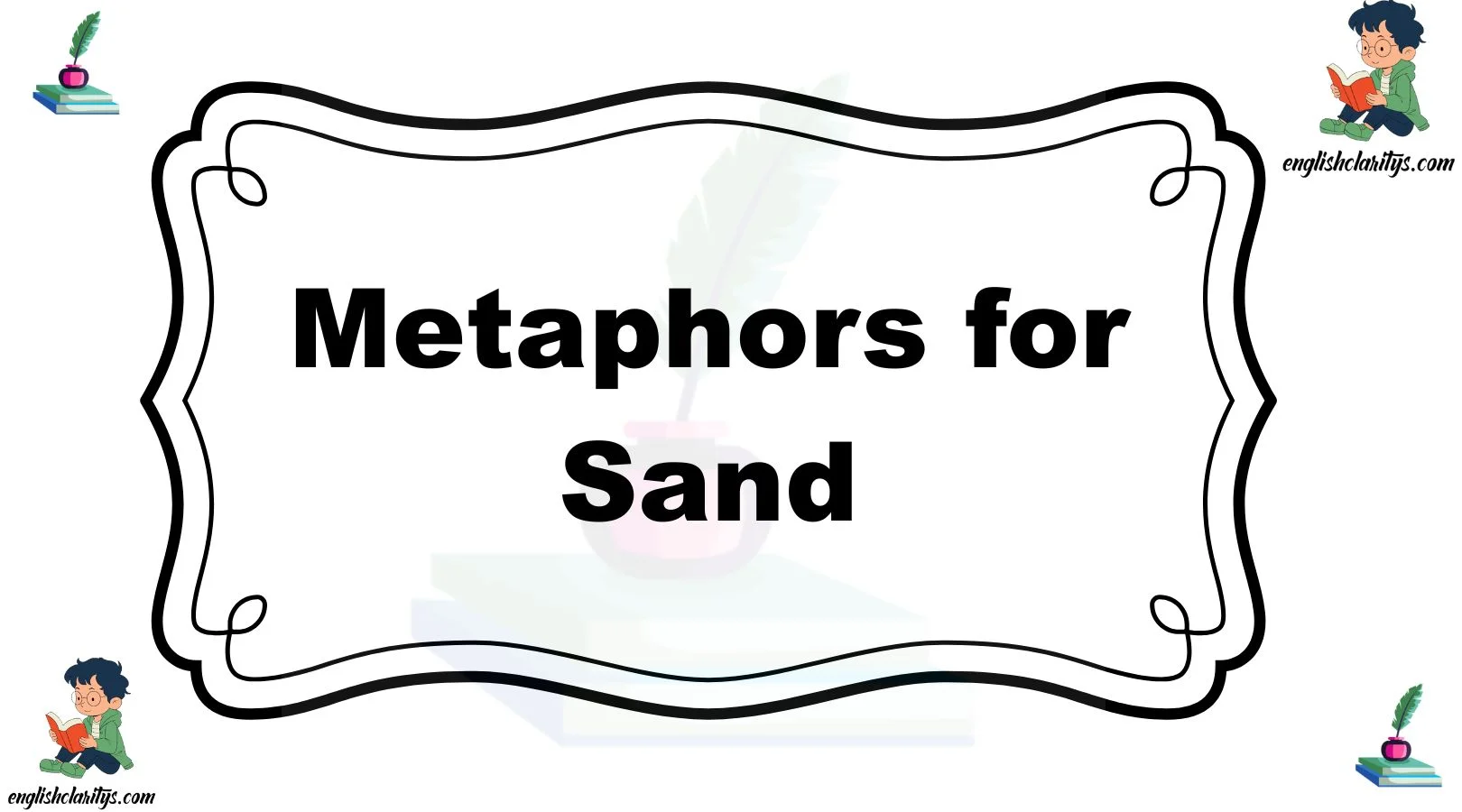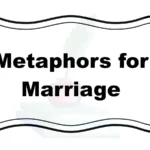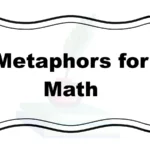Finding the right metaphor can transform the way we express feelings, observations, or memories. Sand, with its shifting nature and timeless presence, offers rich metaphorical value. Whether you’re describing fleeting time, fragile moments, or infinite possibilities, these metaphors help add emotional depth to your words.
In writing or speech, the right comparison can make your expression feel more personal, poetic, and powerful. Below are 30 creative metaphors for “sand,” each with a meaning, detailed explanation, sentence example, and three similar alternatives to help you expand your expressive toolkit.
1. Sand is Time’s Dust
Meaning: Sand represents the remnants of passing time.
Explanation: Just as sand falls through an hourglass, it symbolizes how moments slip away quietly.
Example: “The old photographs were buried in the sand of time’s dust.”
Other ways to say it:
- Grains of passing memory
- Dust of forgotten days
- Echoes of the clock
2. Sand is Nature’s Memory
Meaning: Sand holds the past within its grains.
Explanation: Each grain has traveled far, shaped by wind and water, much like memories shaped by experience.
Example: “Walking barefoot, I felt nature’s memory beneath my feet.”
Other ways to say it:
- Earth’s diary
- Memory underfoot
- The past in particles
3. Sand is the Ocean’s Whisper
Meaning: It carries the quiet stories the ocean leaves behind.
Explanation: Sand is born from waves, much like a whisper from the sea to the shore.
Example: “Each step I took was met with the ocean’s whisper underfoot.”
Other ways to say it:
- Sea’s murmur
- Coastal breath
- Whispered tide
4. Sand is Liquid Stone
Meaning: Sand is solid yet flows like water.
Explanation: This metaphor shows how sand blurs the line between liquid and solid.
Example: “The desert flowed like liquid stone beneath the sun.”
Other ways to say it:
- Earth’s shifting syrup
- Flowing ground
- Solid tide
5. Sand is a Silent Sea
Meaning: A desert of sand is like an ocean without water.
Explanation: Just as the sea stretches wide and deep, so does the sand—quietly and endlessly.
Example: “The dunes stretched like a silent sea, never ending.”
Other ways to say it:
- Dry ocean
- Still tide
- Whispering waves of earth
6. Sand is Stardust Fallen
Meaning: Sand is like fallen cosmic particles.
Explanation: It evokes a dreamy image of earthly material descending from the heavens.
Example: “The beach sparkled like stardust fallen from a quiet sky.”
Other ways to say it:
- Celestial crumbs
- Star-swept soil
- Sky’s remnants
7. Sand is Earth’s Breath
Meaning: It represents the gentle exhale of the land.
Explanation: Wind-blown sand can feel like the earth breathing softly.
Example: “With each gust, the earth’s breath danced across the dunes.”
Other ways to say it:
- Land’s sigh
- Ground’s whisper
- Nature’s exhale
8. Sand is a Blanket of Moments
Meaning: Each grain represents a moment in time.
Explanation: When gathered, they cover the land like a memory-filled blanket.
Example: “She laid on the beach, wrapped in a blanket of moments.”
Other ways to say it:
- Memory quilt
- Time’s cover
- Moment mat
9. Sand is the Canvas of the Wind
Meaning: It shows the artwork of the wind’s motion.
Explanation: Wind shapes patterns in sand, like an artist painting a canvas.
Example: “The dunes shifted, the canvas of the wind ever changing.”
Other ways to say it:
- Breeze’s brushstroke
- Wind’s etching
- Sculpted stillness
10. Sand is the Ink of Time
Meaning: Time writes its story in sand.
Explanation: The marks we leave in sand fade, showing the impermanence of time’s messages.
Example: “His footprints, like the ink of time, were soon washed away.”
Other ways to say it:
- Temporal script
- Fading signature
- Moment’s handwriting
11. Sand is a Mirror of the Sky
Meaning: It reflects the colors and moods of the heavens above.
Explanation: The sand takes on hues of sunrise, sunset, and storms, mirroring the ever-changing sky.
Example: “At dusk, the beach became a mirror of the sky, glowing soft and golden.”
Other ways to say it:
- Sky’s reflection
- Heaven’s echo
- Cloud-colored ground
12. Sand is the Earth’s Skin
Meaning: It covers and protects the surface of the planet.
Explanation: Like skin to a body, sand is the outermost layer, vulnerable yet essential.
Example: “The desert stretched endlessly, as if walking on the Earth’s skin.”
Other ways to say it:
- Ground’s veil
- Soil’s wrapping
- Nature’s cover
13. Sand is a Whispering Path
Meaning: A quiet way forward that speaks softly of what lies ahead.
Explanation: Sand doesn’t echo—it absorbs, muffling footsteps and voices, like a secretive path.
Example: “He wandered the whispering path, guided only by the wind.”
Other ways to say it:
- Silent trail
- Hushed road
- Echoless walkway
14. Sand is the Cradle of Stillness
Meaning: A resting place for quiet and calm.
Explanation: Deserts and beaches cradle silence, allowing thoughts to settle.
Example: “Her heart found peace in the cradle of stillness beneath the dunes.”
Other ways to say it:
- Peace’s bed
- Quiet’s resting place
- Calm’s cradle
15. Sand is the Pause Between Waves
Meaning: It represents the quiet in-between moments.
Explanation: When waves retreat, sand holds the breath before the next arrival.
Example: “In the pause between waves, the sand exhaled its breath of salt.”
Other ways to say it:
- Ocean’s sigh
- Surf’s stillness
- Break in the tide
16. Sand is Time Frozen in Motion
Meaning: Each grain is a frozen moment in time.
Explanation: Though sand moves, each particle is the product of ages.
Example: “The child played in time frozen in motion, unaware of history underfoot.”
Other ways to say it:
- Static age
- Frozen seconds
- Crystallized past
17. Sand is the Breath of Mountains
Meaning: Sand is born from eroded stone.
Explanation: Mountains break down over time, breathing out sand as their final whisper.
Example: “These grains are the breath of mountains long gone.”
Other ways to say it:
- Stone’s whisper
- Hills’ last sigh
- Crumbled heights
18. Sand is the Skeleton of the Sea
Meaning: It is what remains after water leaves.
Explanation: When tides go out, sand is the sea’s bare bones.
Example: “Low tide revealed the skeleton of the sea.”
Other ways to say it:
- Ocean’s remains
- Tide’s bones
- Seabed’s shell
19. Sand is a Song Without Sound
Meaning: It conveys emotion without needing words or melody.
Explanation: Its texture and movement tell stories in silence.
Example: “The sand sang a song without sound beneath the moon.”
Other ways to say it:
- Silent melody
- Voiceless tune
- Wordless rhythm
20. Sand is the World in a Grain
Meaning: It holds infinite meaning in something small.
Explanation: Like Blake’s famous line, it suggests the universe is reflected in the smallest things.
Example: “In that grain of sand, I saw the world in its entirety.”
Other ways to say it:
- Infinity in a speck
- Tiny cosmos
- Universe in dust
21. Sand is Nature’s Puzzle
Meaning: Each grain is a piece of a greater whole.
Explanation: Together, they form landscapes, shores, and dunes.
Example: “Each grain of sand completed nature’s puzzle.”
Other ways to say it:
- Earth’s mosaic
- Soil’s secret code
- Puzzle of time
22. Sand is a Language Without Words
Meaning: Sand communicates through presence, shape, and touch.
Explanation: You feel its meaning through silence and sensation.
Example: “She ran her hands through a language without words.”
Other ways to say it:
- Silent speech
- Ground’s message
- Wordless whisper
23. Sand is the Dance of Wind and Earth
Meaning: It shows the playful balance between air and land.
Explanation: Wind moves it; earth holds it. Together, they perform.
Example: “The dunes swayed in the dance of wind and earth.”
Other ways to say it:
- Soil ballet
- Wind’s partner
- Elemental tango
24. Sand is the Diary of Footsteps
Meaning: It records every step taken, if only briefly.
Explanation: Like a journal that disappears quickly, it tracks where we’ve been.
Example: “The shore held our memories in a diary of footsteps.”
Other ways to say it:
- Path’s journal
- Memory trail
- Fading footprints
25. Sand is the Gold of the Common World
Meaning: Ordinary, but precious in beauty and meaning.
Explanation: We walk over it, but it holds stories and life.
Example: “She found wonder in the gold of the common world.”
Other ways to say it:
- Treasure of the earth
- Everyday riches
- Common sparkle
26. Sand is the Shadow of the Earth
Meaning: It’s shaped by everything around it.
Explanation: Like shadows, sand forms from the presence and absence of things.
Example: “The sand moved like the shadow of the earth.”
Other ways to say it:
- Ground’s echo
- Terrain’s ghost
- Earth’s reflection
27. Sand is Time’s Trail
Meaning: It shows the path time has walked.
Explanation: From stone to dust, it marks what has passed.
Example: “We followed time’s trail across the dunes.”
Other ways to say it:
- Footpath of years
- History’s steps
- Erosion’s journey
28. Sand is a Cradle of Dreams
Meaning: A soft space to imagine and wonder.
Explanation: The calm of sand invites the mind to wander.
Example: “She rested in the cradle of dreams, the beach quiet and golden.”
Other ways to say it:
- Dream bed
- Vision nest
- Thoughtful shore
29. Sand is the Breath Between Stories
Meaning: A pause that holds emotion between two moments.
Explanation: Like the silence between chapters, sand holds presence between events.
Example: “The beach was the breath between stories, waiting for more.”
Other ways to say it:
- Chapter’s pause
- Story’s silence
- Tale’s quiet gap
30. Sand is Earth’s Gentle Voice
Meaning: A soft but ever-present sound.
Explanation: Wind over sand, waves on shore—it’s subtle but unforgettable.
Example: “In the hush of dawn, I heard the earth’s gentle voice in the sand.”
Other ways to say it:
- Planet’s whisper
- Land’s hum
- Nature’s tone
Conclusion:
Sand is far more than just a part of nature—it’s a metaphor for time, silence, dreams, and memory. When you use rich comparisons like these, your writing or speech takes on new emotional depth. These metaphors offer warmth, beauty, and understanding, reminding us that even the smallest things—like a grain of sand—can carry immense meaning. Keep exploring the metaphors around you, and don’t be afraid to use language as a bridge between feeling and expression.
Multiple Choice Questions:
1. What does “Sand is Time’s Dust” symbolise?
A. The weight of rocks
B. The silence of deserts
C. The fleeting nature of time
D. A beach memory
Answer: C
2. What does “Nature’s Memory” suggest about sand?
A. It forgets easily
B. It records the history of earth
C. It creates noise
D. It dissolves in water
Answer: B
3. The phrase “Ocean’s Whisper” best represents…
A. Loud crashing waves
B. The silence of the desert
C. Gentle stories left by the sea
D. The tide’s aggression
Answer: C
4. “Liquid Stone” refers to sand’s ability to…
A. Stay firm always
B. Act like cement
C. Flow like water while still solid
D. Float
Answer: C
5. “Stardust Fallen” implies sand is…
A. A product of human invention
B. Made of magical substances
C. Something ordinary
D. A poetic piece of the cosmos
Answer: D
6. “Blanket of Moments” metaphorically expresses…
A. A literal quilt
B. A warm beach towel
C. Sand as a collection of memories
D. An itchy surface
Answer: C
7. Which metaphor shows sand as a storyteller?
A. Earth’s Skin
B. Diary of Footsteps
C. Gold of the Common World
D. Liquid Stone
Answer: B
8. “Canvas of the Wind” portrays sand as…
A. Static and hard
B. A surface shaped by air
C. Windproof and dry
D. Dangerous terrain
Answer: B
9. “Time’s Trail” metaphor means…
A. Time never moves
B. Sand is a dead end
C. Sand tracks the journey of time
D. It doesn’t hold memories
Answer: C
10. “Breath of Mountains” shows sand as…
A. Hard rock
B. Dusty wind
C. A result of mountain erosion
D. Ocean tide
Answer: C
11. “Silent Sea” refers to…
A. A loud beach
B. A sandy desert that looks like the ocean
C. A fishing pond
D. Frozen water
Answer: B
12. “Earth’s Gentle Voice” implies…
A. Thunder
B. The roaring wind
C. The soft, subtle presence of sand
D. The ground cracking
Answer: C
13. “Shadow of the Earth” means…
A. Sand creates sunlight
B. Sand exists only in dark
C. Sand mirrors earth’s shape and shifts
D. It’s completely flat
Answer: C
14. “Cradle of Dreams” expresses sand as…
A. An uncomfortable bed
B. A cold place
C. A soft space for imagination
D. A storage bin
Answer: C
15. “Language Without Words” refers to…
A. A loud song
B. A poem
C. Sand expressing through texture and feeling
D. Written novels
Answer: C
FAQs:
1. Why use metaphors for something as simple as sand?
Metaphors help bring emotional depth to ordinary things. Sand is more than just particles—it can symbolize time, memory, silence, and wonder when described metaphorically.
2. Are these metaphors suitable for poetry and creative writing?
Absolutely! These metaphors are perfect for poems, stories, letters, or speeches where you want to add beauty, warmth, or introspection.
3. How do I choose the right metaphor?
Think about what you’re trying to express—time, silence, beauty, loss, or memory—and choose a metaphor that mirrors that feeling.
4. Are these metaphors useful for children’s writing too?
Yes, some simpler ones like “Ocean’s Whisper” or “Blanket of Moments” can work beautifully in children’s stories or classroom creativity exercises.
5. Can metaphors be mixed with similes in writing?
Yes! Mixing similes and metaphors can enrich your language even more—just make sure not to overdo it so your meaning stays clear and heartfelt.




